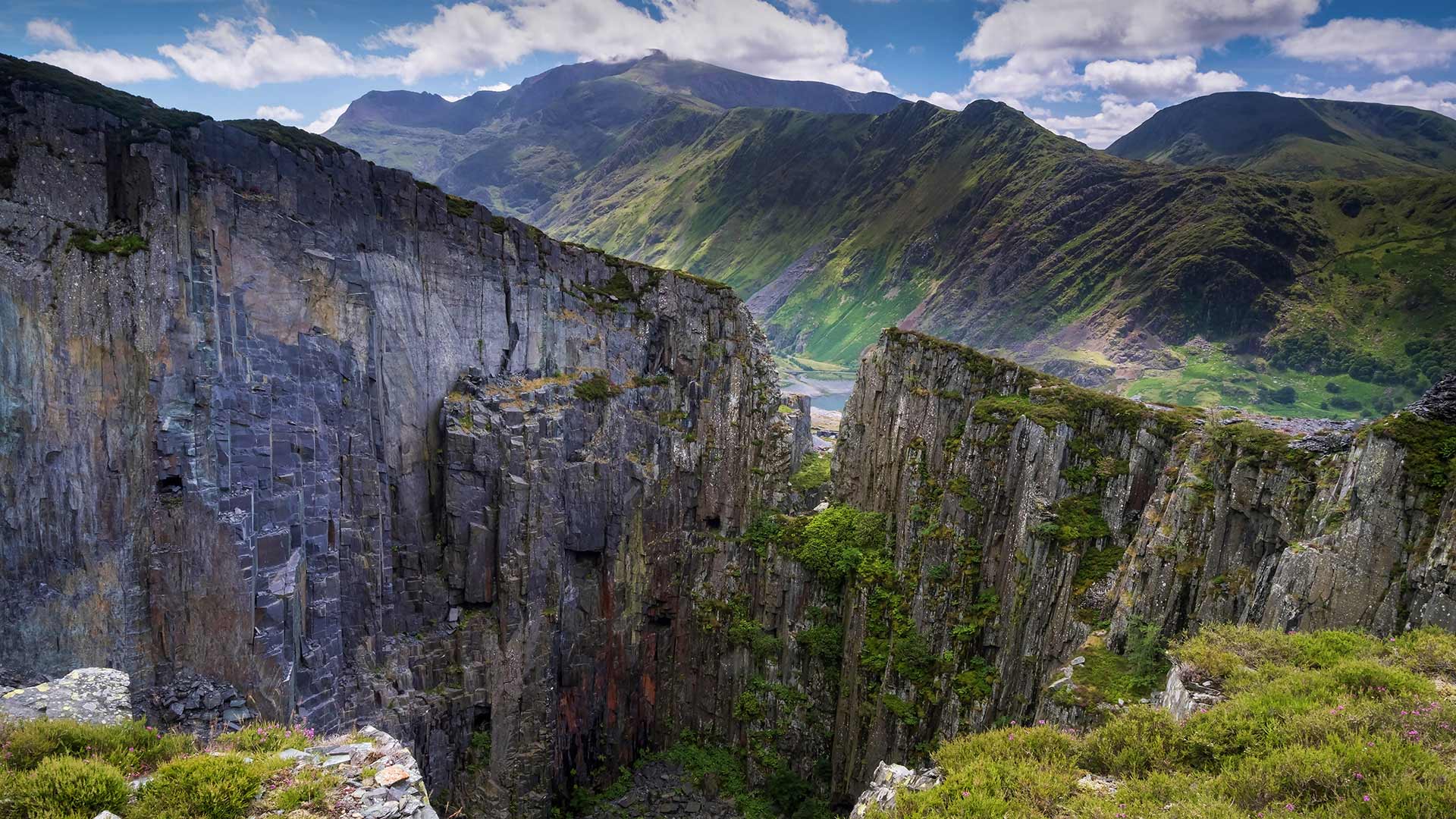斯诺登山与兰贝里斯山口,英国史诺多尼亚国家公园 Mount Snowdon and the Llanberis Pass in Snowdonia National Park, North Wales, United Kingdom (© Alan Novelli/Alamy)

斯诺登山与兰贝里斯山口,英国史诺多尼亚国家公园 Mount Snowdon and the Llanberis Pass in Snowdonia National Park, North Wales, United Kingdom (© Alan Novelli/Alamy)
A chiselled landscape
This dramatic view brings together two Welsh icons. In the distance sits the country’s highest mountain, Snowdon, while the towering walls of slate in the foreground nod to an industry which has reshaped the landscape here over the centuries. This is the former Dinorwic quarry in the county of Gwynedd, once the second-largest slate quarry in the world after nearby Penrhyn. Slate was first extracted here by the Romans but the process really gathered steam during the industrial revolution, when it became known as the industry that ‘roofed the world’.
At its height in the late 19th century, thousands of men were employed at Dinorwic and the Welsh slate industry as a whole extracted about 485,000 tonnes a year. Slate quarrying chiselled its way into the landscape and communities grew up around it. But in 1969, Dinorwic closed, a victim of falling demand and cheaper imports. Now Dinorwic is home to the National Slate Museum of Wales, thanks in part to the efforts of the quarry’s former chief engineer, Hugh Richard Jones, who saved the 51ft (15.4m)-wide waterwheel and other equipment from being sold off.
Welsh slate has a worldwide reputation for quality and was used in the construction of Westminster Hall in London, Copenhagen City Hall and the Royal Exhibition Building in Melbourne, Australia. An important part of Welsh industrial and cultural heritage, this slate landscape has been nominated by the UK government for Unesco World Heritage status.
轮廓分明的风景
这一戏剧性的景象汇集了两个威尔士图标。远处坐落着该国最高的山峰斯诺登,而前景中高耸的石板墙表明,几个世纪以来,这一行业重塑了这里的景观。这是格温内德县的前迪诺维奇采石场,曾经是仅次于附近的彭恩的世界第二大板岩采石场。石板最早是罗马人在这里开采的,但在工业革命期间,这一过程真的积聚了蒸汽,当时它被称为“给世界盖屋顶”的工业。
在19世纪末的鼎盛时期,成千上万的人受雇于迪诺维奇,整个威尔士板岩行业每年开采约48.5万吨。石板采石逐渐进入了风景区,周围的社区也随之发展起来。但在1969年,Dinorwic关闭了,成为需求下降和进口价格下降的受害者。如今,迪诺维奇是威尔士国家石板博物馆的所在地,这在一定程度上要归功于采石场前总工程师休·理查德·琼斯(Hugh Richard Jones)的努力,他挽救了这座51英尺(15.4米)宽的水车和其他设备,使其免遭抛售。
威尔士板岩的质量在世界范围内享有盛誉,曾用于伦敦威斯敏斯特大厅、哥本哈根市政厅和澳大利亚墨尔本皇家展览大楼的建设。作为威尔士工业和文化遗产的重要组成部分,这块石板景观已被英国政府提名为联合国教科文组织世界遗产。
评论已关闭